
Wingrave is a village in Buckinghamshire, England, about four miles north east of Aylesbury and three miles south west of Wing.

Frisby on the Wreake is a village and civil parish on the River Wreake about 3.5 miles (5.6 km) west of Melton Mowbray, Leicestershire, England. The 2011 Census recorded the parish's population as 557.
The court leet was a historical court baron of England and Wales and Ireland that exercised the "view of frankpledge" and its attendant police jurisdiction, which was normally restricted to the hundred courts.
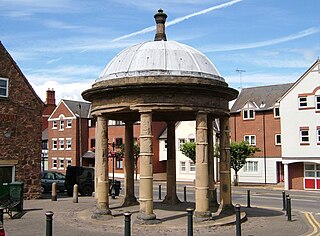
Mountsorrel is a village in Leicestershire on the River Soar, just south of Loughborough with a population in 2001 of 6,662 inhabitants, increasing to 8,223 at the 2011 census.

Gleadless is a suburb and parish within the City of Sheffield, it lies five km south east of the city centre. It is bordered by the adjoining suburbs of Gleadless Valley to the west, Frecheville to the east and Intake to the north. The land to the south is the rural area of North East Derbyshire district which is outside the city boundary. Gleadless was formerly a country hamlet, then village before becoming part of the expanding city of Sheffield in 1921. The word Gleadless comes from the Old English language and means either "forest clearings haunted by a kite" or "bright clearing".
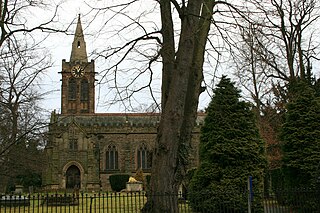
Ruddington is a large village in the Borough of Rushcliffe in Nottinghamshire, England. The village is 5 miles (8 km) south of Nottingham and 11 miles (18 km) northwest of Loughborough. It had a population of 6,441 at the 2001 Census, increasing to 7,216 at the 2011 Census and 7,674 in 2021. Ruddington is twinned with Grenay, France.

Frampton Cotterell is a large village and parish, in South Gloucestershire, South West England, on the River Frome. The village is contiguous with Winterbourne to the south-west and Coalpit Heath to the east. The parish borders Iron Acton to the north and Westerleigh to the south-east, the large town of Yate is 2.1 miles (3.4 km) away. The village is 7.5 miles (12 km) north-east of the city of Bristol.
Beth Shalom, also named the National Holocaust Centre and Museum, is a Holocaust memorial centre near Laxton in Nottinghamshire in England. Opened in 1995, it is England's only dedicated Holocaust museum, though there is also a permanent exhibition at London's Imperial War Museum and another in Huddersfield, the Holocaust Exhibition and Learning Centre, which was opened in 2018. The centre was founded by brothers James and Stephen Smith following a 1991 visit to Israel during which a trip to Yad Vashem changed the way they looked at history and the Holocaust.
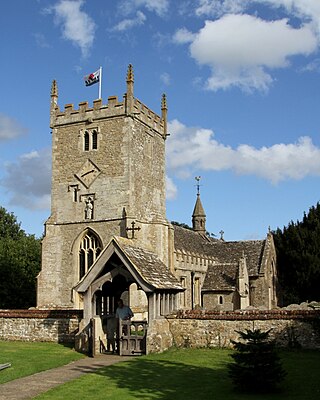
South Marston is a village and civil parish in the Borough of Swindon, Wiltshire, England. The village is about 3 miles (5 km) north-east of Swindon town centre.
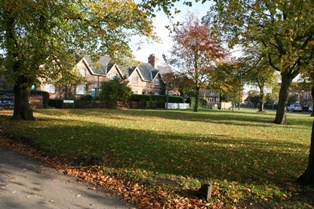
Wilford is a village and former civil parish in the Nottingham district, in the ceremonial county of Nottinghamshire, England. The village is to the northeast of Clifton, southwest of West Bridgford, northwest of Ruddington and southwest of Nottingham city centre. It is at a meander of the River Trent.
The Aegis Trust, founded in 2000, is the British NGO which campaigns to prevent genocide worldwide. Based at the United Kingdom's Holocaust Centre, which opened in 1995, the Aegis Trust coordinates the UK Genocide Prevention All-Party Parliamentary Group, funds the Genocide Prevention Group (Canada) and is responsible for the Kigali Genocide Memorial Centre in Rwanda, which commemorates the 1994 genocide and is central to education of a new generation about the dangers of ethnic division.
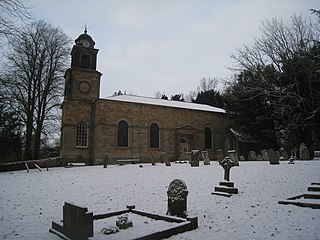
Ossington is a village in the county of Nottinghamshire, England 7 miles north of Newark-on-Trent. It is in the civil parish of Ossington, but for census purposes its population count is included with the civil parishes of Ompton and Laxton and Moorhouse. It was centred on Ossington Hall, the ancestral home of the Denison family, but the house was demolished in 1964 and all that remains are a few outbuildings and a private chapel that now serves the parish as Holy Rood Church, Ossington. This is a Grade I listed building, originally 12th century and rebuilt in 1782–1783 by the architect John Carr, with minor 19th-century alterations and additions. It includes earlier monuments and stained glass. There is a barrel organ built by Thomas Robson in 1840.
Stephen D. Smith MBE is a Holocaust and genocide specialist who has designed, operated and consulted for many different Holocaust memorial centres. He currently holds the UNESCO Chair on Genocide Education.
Kneesall is a village and civil parish in the East Midlands of England in the county of Nottinghamshire. The population of the civil parish at the 2011 census was 221. Forming part of the Newark and Sherwood district, Kneesall is situated on the A616 between Newark-on-Trent and Ollerton. The village is three miles from neighbouring Eakring and four miles from Laxton.

Trysull is a rural village in the county of Staffordshire, England approximately five miles south-west of Wolverhampton. With the adjacent village of Seisdon, it forms the civil parish of Trysull and Seisdon, within the South Staffordshire non-metropolitan district. Until 1974 it formed part of Seisdon Rural District. The 2011 census recorded a usually resident population for the parish of Trysull & Seisdon of 1,150 persons in 455 households.

Langwith is a close group of six villages crossing the Derbyshire-Nottinghamshire border, on the River Poulter about 2 miles (3.2 km) from Warsop, and about 4 miles (6.4 km) from Bolsover on the A632 road, south of Whaley Thorns. The population is listed under the Derbyshire civil parish of Langwith and the Nottinghamshire civil parish of Nether Langwith.
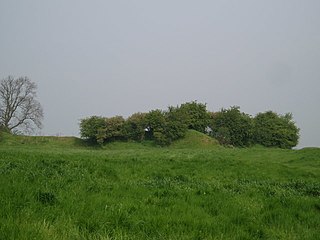
Laxton Castle is a late 11th- or early 12th-century medieval castle located north of the village of Laxton in Nottinghamshire, England. According to an early 20th-century report by the British Archaeological Association, the site is notable not only as "the most striking specimen of a mount and court stronghold" in the area, but also for "the nearly perfect condition of its two courts", which made of it a valuable resource for study.

Moorhouse or Laxton Moorhouse is a hamlet within the Laxton and Moorhouse parish, in the Newark and Sherwood district of central Nottinghamshire, England.
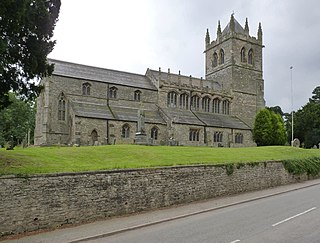
Laxton and Moorhouse is a civil parish in the Newark and Sherwood district, within the county of Nottinghamshire, England.

Moorgreen is a hamlet in the Broxtowe district of Nottinghamshire, England. It is 115 miles (185 km) north west of London, 7 miles (11 km) north west of the city of Nottingham, and 1+1⁄4 miles (2 km) north east of the nearest town Eastwood. It is a linear settlement within the civil parish of Greasley.




















